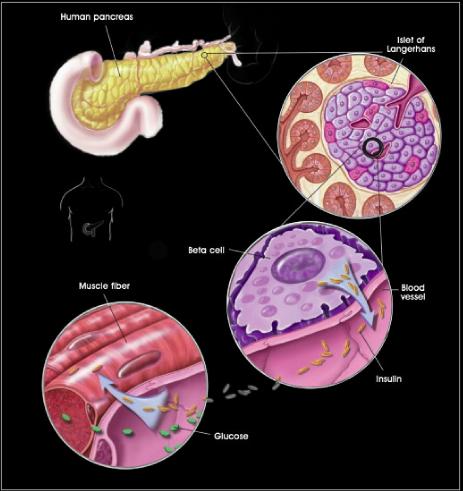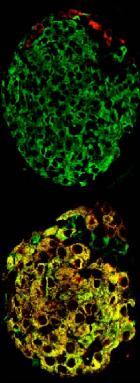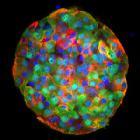 |
||
 |
||
The pancreas is situated under the stomach and beside a section of the small intestine called the duodenum. The pancreas has two roles that are important for the processing of ingested nutrients. First, it synthesizes and secretes enzymes in a bicarbonate rich juice through a complex ductal structure into the duodenum. Here these enzymes are activated and carry out their essential job of breaking food down into readily absorbable units. Secondly, and of greater interest to us, the pancreas synthesizes and secretes endocrine hormones into the blood. The cells that produce these hormones are situated in tiny islands or groups of cells called islets of Langerhans, which are interspersed amongst the exocrine tissue. The most well known pancreatic hormone is insulin; it is produced in the pancreatic β-cell and is secreted in response to the elevated blood glucose levels that accompany eating. Insulin travels in the bloodstream to the target tissues where it regulates removal of glucose from the blood: thereby normalizing glucose levels. There are no other hormones that have a similar role to insulin in humans and loss of insulin effectiveness results in a disease known as diabetes mellitus. |
||

the pancreatic islet and insulin


